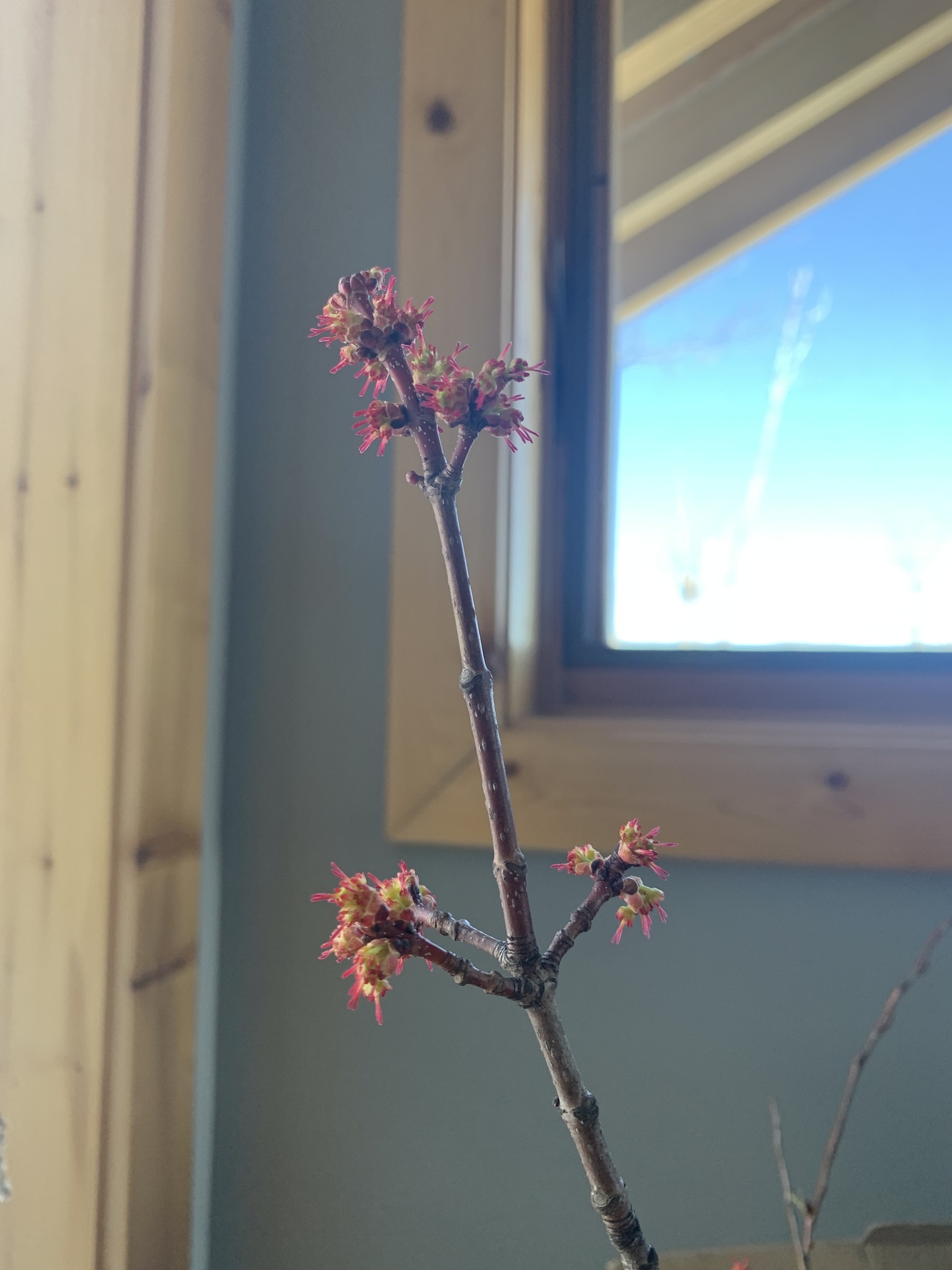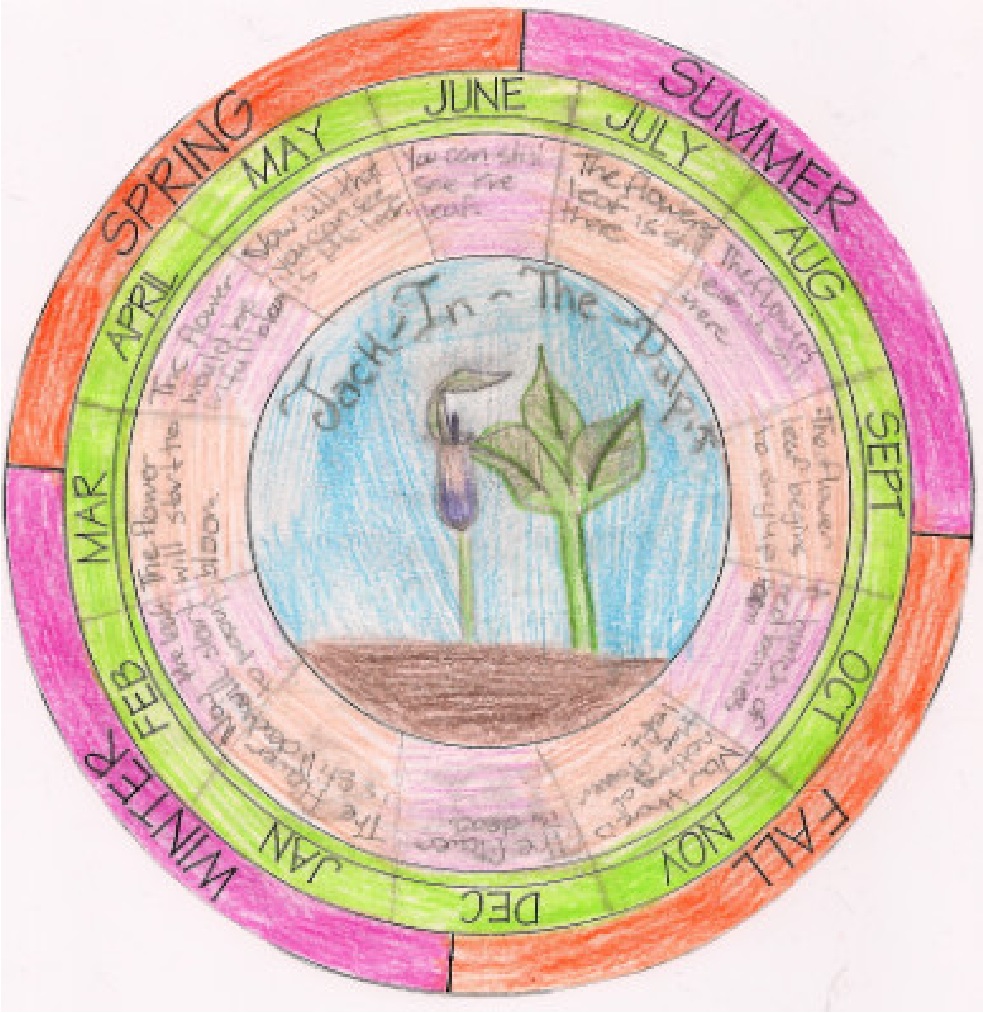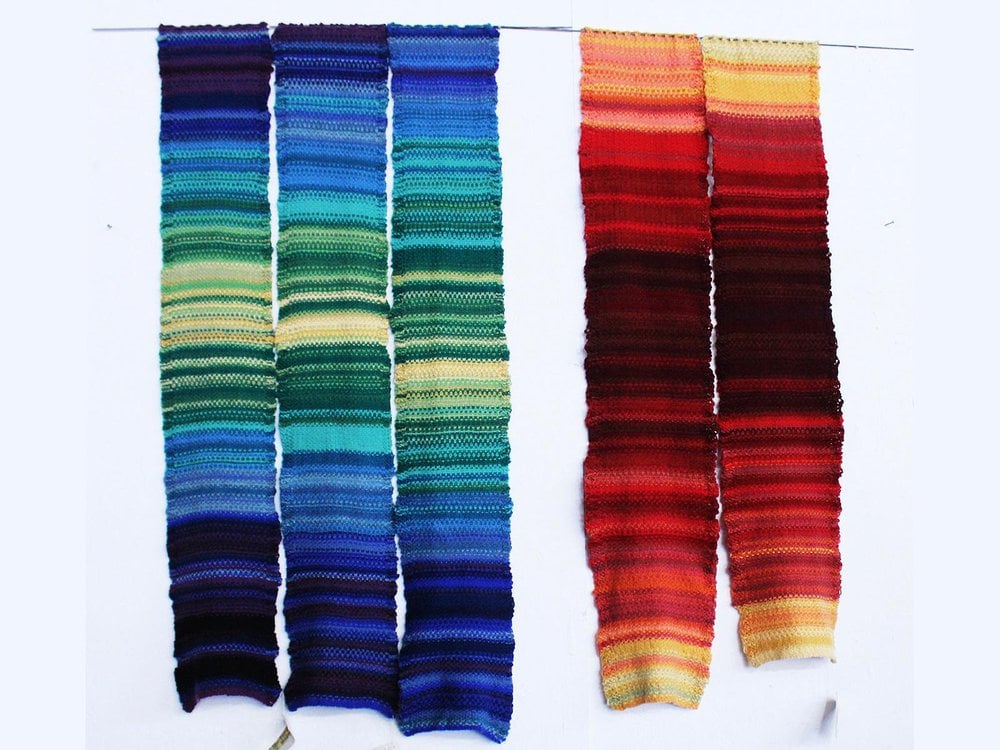Hands-on projects offer engaging ways to think about phenology.
Just about every element of the natural world—water, temperatures, leaves, berries, fur, etc.—can be explored in terms of how it changes with the seasons. When that exploration involves creative acts, such as making something with your hands or voices, learning becomes playful, memorable, and meaningful.
Below are a four hands-on projects that connect to phenology. These projects help learners become comfortable with the idea of phenology through careful looking, record keeping, and nature interpretation.
A wealth of additional ideas, especially for educators, are listed on the Season Watch's Resources page.

Photo by © Kate Folkman, some rights reserved (CC-BY-NC)
iNaturalist observation
Twig Experiments
An experiment is something you can do using your hands! Cutting twigs and observing them over a few weeks is a simple way to investigate the phenology of trees. This resource describes two related experiments that anyone can try, using everyday supplies such as cuttings from nature, jars with water, string, and pencil and paper. The activities work best with red maple (Acer rubrum) twigs in late January or February, but will also work with other species.
By John Latimer and Charlie Mitchell
Share your story over the radio
Students (and phenology enthusiasts of any age) are encouraged to create short audio recordings describing phenology observations near their school. Selected stories will be broadcast on John Latimer's Phenology Talkbacks program on Tuesday mornings. Phenology Talkbacks is a way for students and listeners from across the state to send in their nature reports! Depending on the season, reports may cover wildflowers, wildlife, weather, and other wonders.
Educators can learn more by attending a Phenology in the Classroom workshop.

Phenology wheels
A phenology wheel is a circular journal or calendar designed to organize visual records of nature observations. It encourages the observer to look closely and frequently to understand changes and make connections.
Links to project instructions:
- Phenology Wheels, a curriculum published by University of Wisconsin-Madison Arboretum (2009)
- Phenology Wheels: Earth Observation Where You Live, an article in Clearing (clearingmagazine.org) (2014)
- Wheels of Time and Place, a downloadable toolkit by Anne Forbes, Partners in Place, LLC (2022)

Tempestries for Utqiagvik, Alaska (L—R: 1925, 2010, 2016) and Death Valley, California (L—R: 1950, 2016)
Temperature scarves and tapestries
A temperature scarf is a textile with stripes of many colors that is designed based on changes in the weather. Each stripe represents a period of time, such as a day or a week, and each color corresponds to a temperature range. This project is typically knit, crocheted, or woven, but it could be adapted for alternative materials and techniques.
Links to project instructions:
- Knitted "Year-in-Review" Temperature Blanket by FieldCrafting, Instructables.com
- Original Tempestry Instructions by Emily McNeil, Ravelry.com
Articles about this project:
- How Knitting Enthusiasts Are Using Their Craft to Visualize Climate Change, article in Smithsonian Magazine (2020)
- 2013 - Temperature Scarves and Afghans, via dataphys.org by Pierre Dragicevic and Yvonne Jansen
- The Tempestry Project, entry in Wikipedia

